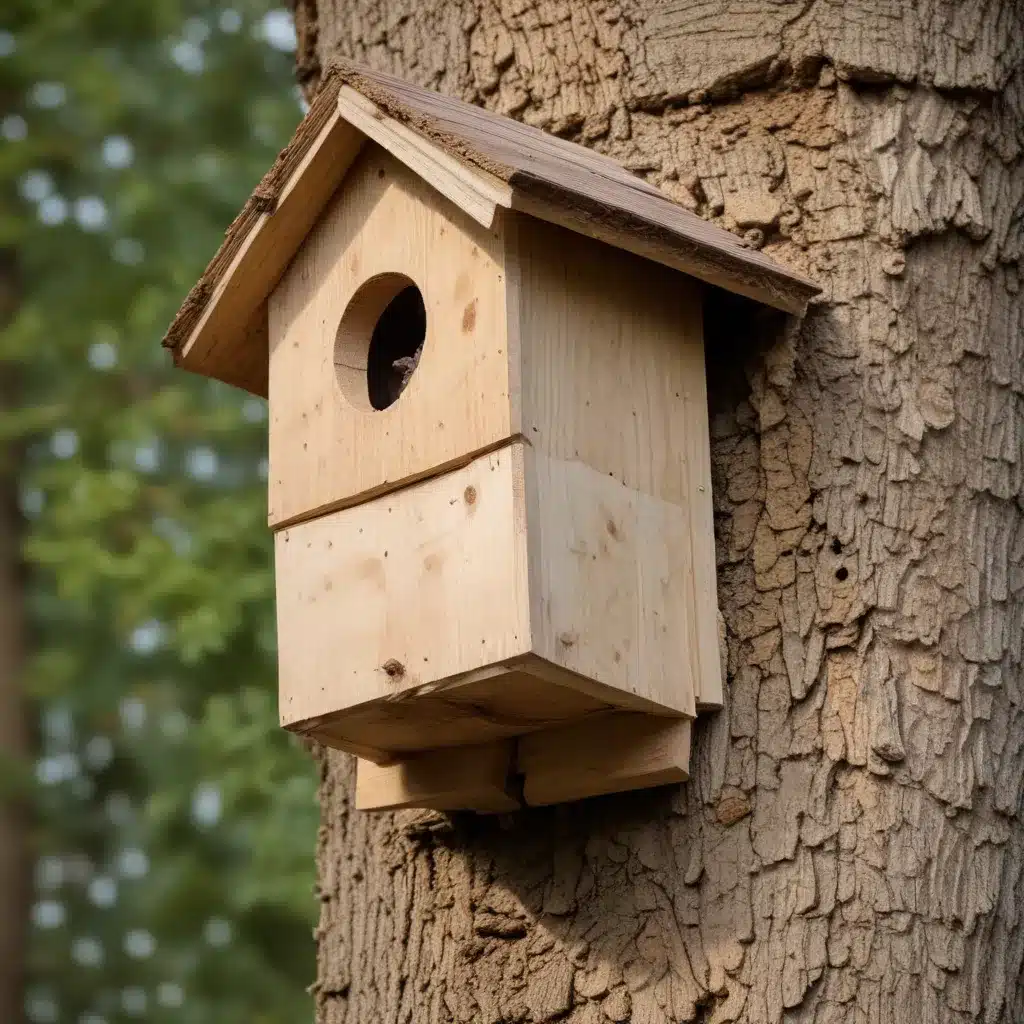
Bats are remarkable creatures, playing a vital role in maintaining the ecological balance of our planet. As the primary nocturnal predators of insects, these winged mammals are nature’s premier pest controllers, consuming vast quantities of mosquitoes, moths, beetles, and other night-flying bugs. By providing habitat for bats through the installation of specialized bat houses, we can harness their incredible insect-eating abilities to the benefit of our farms, gardens, and communities.
Bat Habitats and Ecology
Bat Species Diversity
The state of Washington is home to 15 species of bats, each with unique adaptations and ecological niches. From the tiny, 7-inch wingspan of the little brown bat to the 16-inch span of the big brown bat, these diverse species have thrived in our state for millennia. While their diets may vary, all Washington bats share a common trait: a voracious appetite for insects.
Roosting Requirements
Bats require specialized shelters, known as “roosts,” to meet their diverse needs throughout the year. These roosts can take many forms, including caves, mines, bridges, tree cavities, and even human-made structures like attics and barns. Bats use different roosts for different purposes, such as maternity colonies where females give birth and raise their young, hibernacula where they overwinter, and day roosts and night roosts used for resting and digesting food.
Bat Behavior and Feeding Habits
Washington’s bats are adept at navigating their nocturnal world, using echolocation to detect and capture their prey. As the sun sets, these insect-eating specialists take to the skies, consuming their body weight in bugs each night. From the Mexican free-tailed bat that forages high above the tree canopy to the Yuma myotis that hunts close to the ground, bats play a crucial role in controlling agricultural and forest pests.
Bat House Design Considerations
Size and Placement
Constructing an effective bat house requires careful attention to size and placement. Bat houses should be at least 24 inches tall and 14 inches wide, with a series of chambers to accommodate varying bat species and colony sizes. Positioning the house 10 to 12 feet above the ground, away from potential predators and human disturbances, is essential for attracting occupants.
Construction Materials
The materials used in bat house construction can significantly impact their success. Exterior surfaces should be rough or textured to provide a good grip for bats, while the interior should be grooved or slotted to mimic the crevices bats naturally seek. Cedar, redwood, and exterior-grade plywood are durable, insect-resistant choices, while dark colors like black or brown help the houses absorb heat.
Ventilation and Insulation
Proper ventilation and insulation are critical for creating an inviting microclimate within the bat house. Vents or louvers near the top of the structure allow for air circulation, while insulation in the walls and roof helps maintain a stable, warm temperature preferred by roosting bats. Incorporating a landing area below the entrance also encourages occupancy.
Benefits of Bat Conservation
Pest Control Services
Bats are unparalleled in their ability to control insect populations. A single little brown bat can consume up to 1,200 mosquitoes in a single hour, making them invaluable allies in the fight against agricultural and garden pests. By hosting bat colonies in your backyard through the installation of bat houses, you can drastically reduce the need for harmful pesticides while enjoying a more diverse and balanced ecosystem.
Pollination and Seed Dispersal
In the tropics, bats play a critical role as pollinators and seed dispersers, helping to maintain the health of forests and orchards. While Washington’s bats do not share these pollination duties, their insect-eating prowess still has a profound impact on the broader ecosystem, supporting a thriving food web that benefits plants, birds, and other wildlife.
Ecological Balance
Bats are a vital component of a healthy, functioning environment. Their consumption of vast quantities of insects helps to regulate populations, preventing outbreaks that could devastate crops or forests. By providing crucial habitat for bats through the installation of bat houses, we can do our part to preserve the delicate ecological balance that sustains our local ecosystems.
Designing Effective Bat Houses
Site Selection and Orientation
When choosing a location for your bat house, consider factors like proximity to water sources, foraging areas, and potential roosting sites in trees or other structures. Orienting the house to face the east or southeast, away from direct afternoon sun, can help maintain an optimal interior temperature. Placement near a tree line or other vertical structure can also provide additional protection and a clear flight path for bats.
Entrance Size and Configuration
The entrance to your bat house should be approximately 3/4 to 1 inch tall and at least 20 inches wide, allowing easy access for roosting bats. Multiple chambers within the house, each with their own entrances, can accommodate different bat species and colony sizes. Incorporating a landing area below the entrance can also make it easier for bats to access the roost.
Monitoring and Maintenance
Regularly monitoring your bat house is essential for ensuring its continued occupancy and effectiveness. Check for signs of bat activity, such as guano (bat droppings) or visible bats, and make any necessary repairs or adjustments to the structure. Cleaning out old guano and debris every few years can help maintain a suitable, inviting environment for your winged guests.
By designing and installing high-quality bat houses on your farm or in your backyard, you can play a vital role in supporting the conservation of these remarkable creatures. As nature’s pest controllers, bats provide invaluable services that benefit both our agricultural systems and the broader ecosystem. So why not join the ranks of responsible stewards and give bats a safe, comfortable place to call home?


